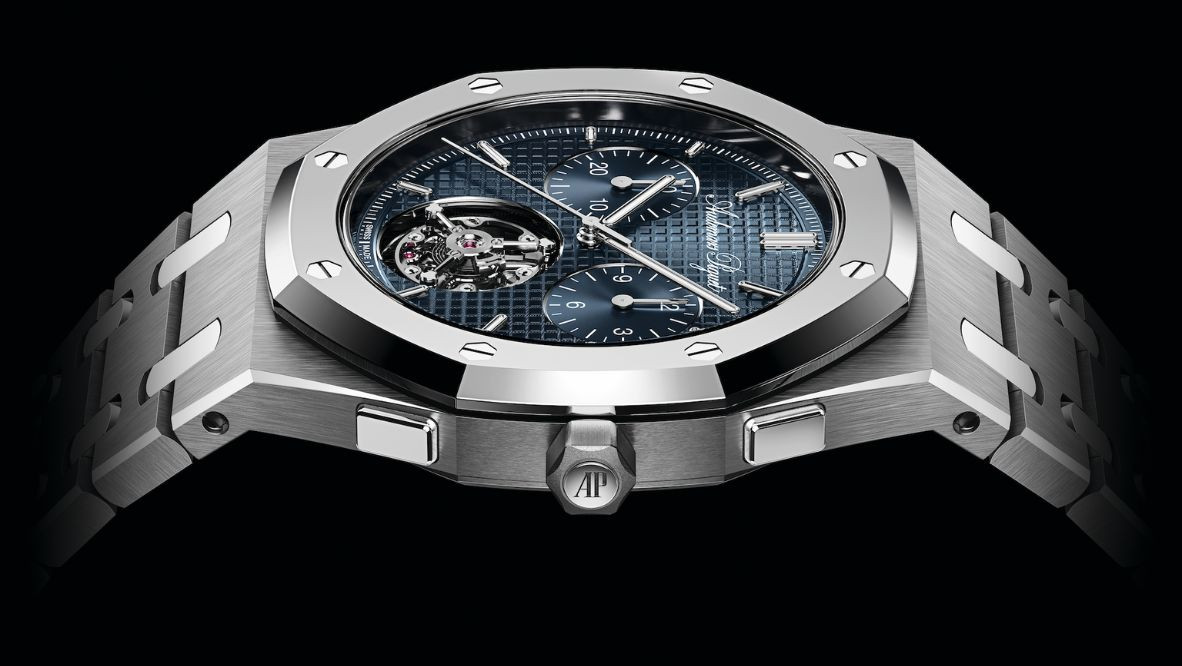The Audemars Piguet Royal Oak “Jumbo” Extra-Thin Selfwinding Flying Tourbillon Chronograph RD#5 marks the last in the RD series of groundbreaking mechanics
After 10 years, Audemars Piguet is turning the page on the RD series by incorporating its pioneering spirit of innovation into the AP Fabrication Laboratories. These Fab Labs will continue the RD legacy of groundbreaking mechanics and designs through research, prototyping, and cross-disciplinary collaborations.
It draws the curtain on the RD with a bang: the RD#5 chronograph in a Royal Oak “Jumbo”. Introduced in 1972, the “Jumbo”—so named because 39mm was considered large at the time—is an icon that redefined modern horological design. As coveted as ever, the new “Jumbo” timepiece is endowed with a mechanism that took five years to develop: the slim Calibre 8100, featuring a flying tourbillon and a flyback chronograph. It’s the first time this combination of complications has appeared in the Royal Oak.
Read more: Audemars Piguet will join Watches and Wonders 2026
The key objective of RD#5 was to “create a chronograph that offers an elevated level of comfort”, achieved by refining the pushers’ tactile response. Conventional pushers travel about 1mm and require a force of 1.5kg. Drawing inspiration from smartphone buttons, the new mechanism reduces travel to just 0.3mm with a force of 300g, making the chronograph operation remarkably effortless.
Discreet and highly user-friendly, the finesse of this update is complemented by glass box sapphires front and back, creating ample space for the hands and oscillating weight to move freely.
See also: Audemars Piguet’s CEO Ilaria Resta on the brand’s 150-Year legacy
Audemars Piguet didn’t stop there. The innovation also reimagined the zero-setting system for greater precision and intuitiveness. The patented mechanism optimises energy via a rack-and-pinion system. Energy is stored in the rack to keep the gear train under tension and prevent unnecessary shaking of the chronograph hand.
The flyback function utilises the stored energy in the rack to return instantaneously to zero. Giulio Papi, director of watchmaking design, explains: “Think of the traditional chronograph as a car driving with the handbrake on. Calibre 8100 does away with the handbrake; instead, imagine it is tied to an elastic band when it leaves the garage. It will use the stored energy, which would be lost through friction when the handbrake is released, in the elastic to return to the garage.”
Together with the lightweight titanium hand and chronograph wheel, the reset takes less than 0.15 seconds and even delivers an instantaneous minute jump, a feature highly prized by collectors. This is further aided by an innovative vertical clutch system that combines traditional and friction clutches, allowing the clutch wheel to move vertically for enhanced stability.

